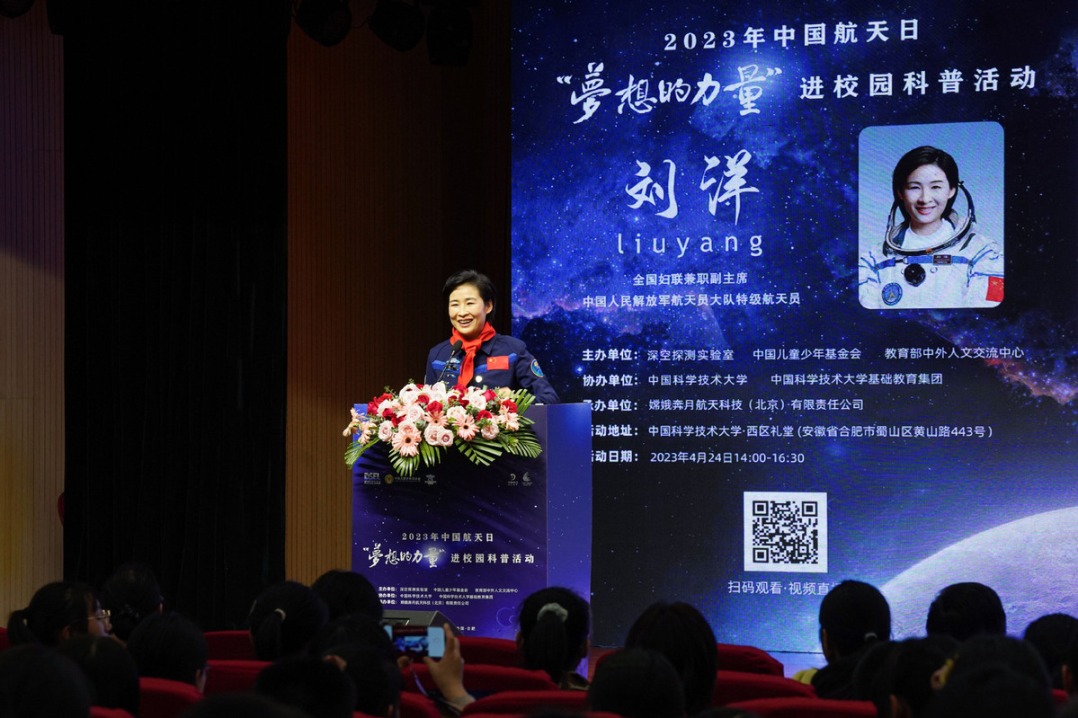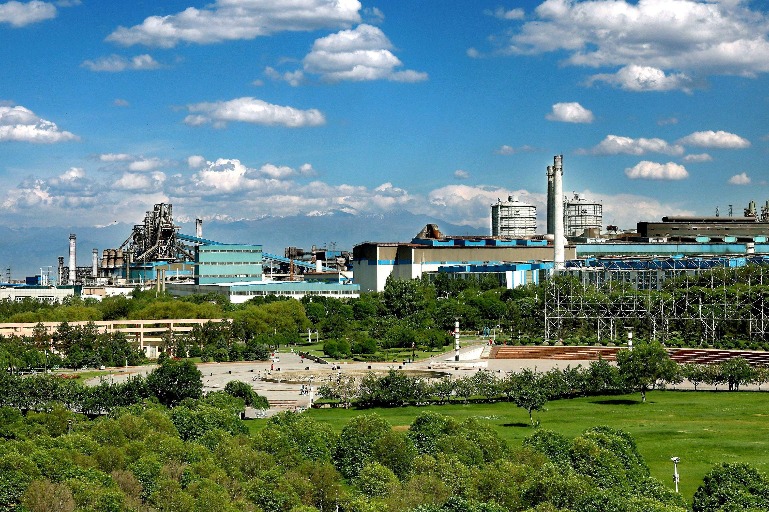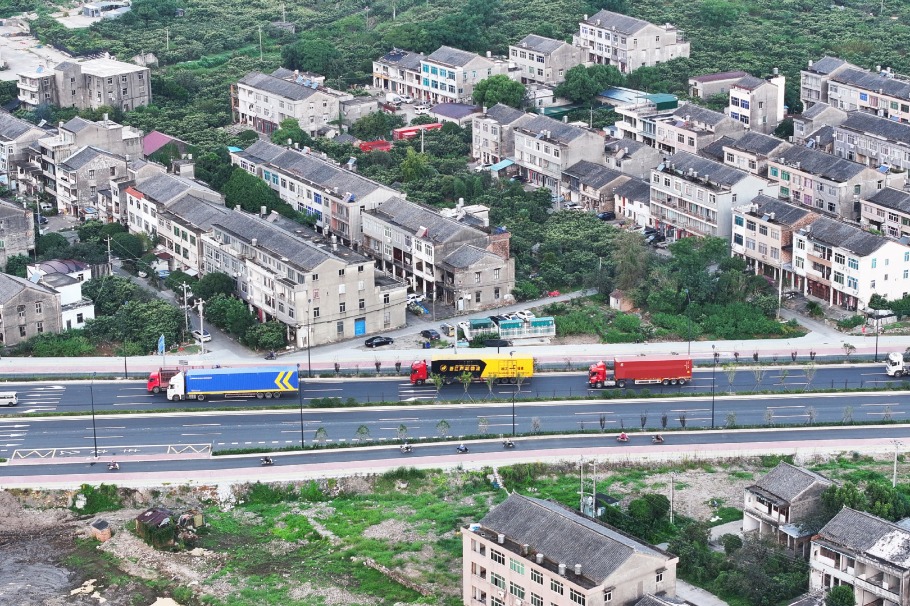Harmony with nature
Well-designed infrastructure projects can make big contribution to realizing the global biodiversity goals


Well-designed infrastructure projects can make big contribution to realizing the global biodiversity goals
Infrastructure projects are often considered to have negative impacts on biodiversity, especially in tropical developing countries. However, with careful project design, implementation, and strict safeguard policies, infrastructure projects not only bring major development benefits to local communities but they can also contribute to biodiversity conservation through concentrating development in suitable areas and drawing people away from areas with high biodiversity values.
China has huge overseas infrastructure investments that have impacts on a number of global hot spots in developing countries. Thus, these investments have, and will continue to have, significant influences on the global biodiversity agenda, but the question is how to reduce the negative impacts and encourage the positive ones.
An example is the recent support for biodiversity protection along the standard gauge railway in Kenya, which included measures along the entire railway line to ensure the free movement of animals. The potential negative impacts of the railway construction were reduced. But many infrastructure projects still harm biodiversity. China is now striving to promote green infrastructure investments, and this provides an opportunity to contribute significantly to the global biodiversity agenda.
The Kunming-Montreal Global Biodiversity Framework was adopted at the 15th Conference of the Parties of the Convention for the Conservation of Biodiversity (COP15) in December 2022. The framework, which will guide global biodiversity conservation until 2030, has 23 targets. Target 3 is a significant and ambitious plan to protect 30 percent of the planet's land and sea areas by 2030. This target aims to expand protected areas and other effective area-based conservation measures (OECMs), so that together they cover 30 percent of the Earth's surface. This target has generated debate among stakeholders who observe ineffective protection of nature and social injustices inflicted on indigenous peoples associated with many existing protected areas. Addressing these problems may be more important than simply increasing the areas nominally protected. The protected area target is dependent on Target 19 which aims to mobilize at least $200 billion per year by 2030. Funding was a key issue during the COP15 because lack of funding was a major reason for the failure to achieve the Aichi Targets which guided global biodiversity conservation between 2010 and 2020.
China's infrastructure investments clearly need to avoid critical biodiversity areas and should not endanger existing protected areas. These investments will provide opportunities to establish new protected areas. However, the greatest opportunity for the investments is to guide patterns of development so that people move toward areas of high potential for agriculture, industry and urbanization and away from remote natural hinterlands. The investments can lead to the concentration of the human population in development corridors along infrastructure, and attract people away from hinterlands and reduce pressure on natural ecosystems. These infrastructure projects can be guided by China's Ecological Conservation Redlines, which commits areas to varying degrees of protection for biodiversity, disaster mitigation and the provision of critical ecosystem services. The investments must provide resources to ensure that such areas are effectively safeguarded.
China's overseas infrastructure investments can contribute to implementing the Kunming-Montreal Global Biodiversity Framework. China launched the Kunming Biodiversity Fund during the COP15 of the Convention on Biological Diversity with a commitment of $232.47 million which will support biodiversity protection in developing countries. During the seventh Global Environment Facility assembly in Vancouver, Canada, between Aug 22 and 26, all eyes were on the official launch of the Global Biodiversity Framework Fund, a new fund with contributions of 200 million Canadian dollars ($147.20 million) from Canada and 10 million pounds ($12.60 million) from the United Kingdom. These contributions are still insufficient to meet Target 19 that aims to mobilize at least $200 billion per year by 2030.This is nonetheless a step toward closing the biodiversity funding gap that is estimated by the Convention on Biological Diversity to be $700 billion per year.
China has shown a strong commitment to invest in green infrastructure, and thus agencies such as banks and enterprises should be encouraged to contribute to global biodiversity finance through either the Kunming Biodiversity Fund or the Global Biodiversity Framework Fund. China can play an important role in ensuring that the proliferation of funds does not result in competition and inefficiency — China is in a position to reduce this risk.
Chinese overseas infrastructure investments' potential contributions toward biodiversity protection go beyond achieving the"30x30" target. The investments' network has the capacity to facilitate knowledge sharing, global partnership building and broadly applied safeguard policies.
China's commitment to invest in green infrastructure has the potential to support the global biodiversity agenda by influencing patterns of investments in ways which meet human development needs whilst avoiding disturbance of important natural areas. The investments can integrate biodiversity protection into its infrastructure projects and invest its funds in ways which support biodiversity targets. The investments are driven by national development priorities in its partner countries and might be able to have an influence on building synergies between the multiple emerging biodiversity funding sources which will be available in tropical developing countries.
Chinese overseas infrastructure investments can best contribute by supporting implementation of the Kunming-Montreal Global Biodiversity Framework at the national level and by ensuring that infrastructure projects do not harm biodiversity, but instead ensure that development is targeted to ensure that benefits to people are maximized and harm to nature is minimized.
Jeffrey Sayer is a professor in the Department of Forest and Conservation Sciences, and Ge Yingxue is a graduate student in the Faculty of Forestry, at the University of British Columbia in Vancouver. The authors contributed this article to China Watch, a think tank powered by China Daily. The views do not necessarily reflect those of China Daily.
Contact the editor at editor@chinawatch.cn.


































